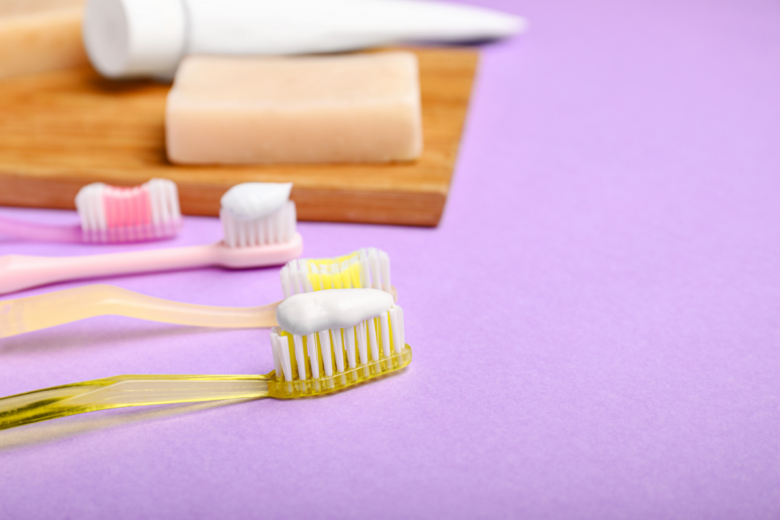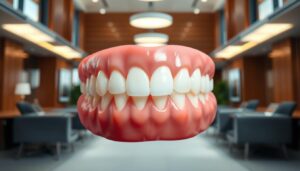Your gums are like the foundation of a house—if they’re not healthy, everything else falls apart. Choosing the right toothbrush can make all the difference in maintaining your oral health. Let’s dive into how to pick the perfect one for your gums.
Healthy gums are the cornerstone of a vibrant smile and overall well-being, yet they’re often overlooked in daily routines. While brushing your teeth may seem like a simple task, the toothbrush you choose plays a critical role in the health of your gums. A poorly chosen brush can cause irritation, gum recession, and even open the door to more serious oral health issues.
With so many options on the market, from soft-bristle manual brushes to advanced electric models, it can feel overwhelming to know where to start. But understanding your gums’ specific needs is the first step to making an informed choice. Whether you have sensitive gums, are prone to plaque buildup, or just want to maintain a healthy baseline, there’s a toothbrush designed for you.
The right toothbrush does more than clean your teeth—it nurtures your gums, prevents damage, and sets the stage for better overall oral hygiene. In this guide, we’ll explore the essential factors to consider when selecting a toothbrush, ensuring that your gums get the care they need to keep you smiling brightly.
Why Choosing the Right Toothbrush Matters
The Connection Between Gums and Overall Oral Health
Healthy gums aren’t just about a pretty smile—they’re a gateway to overall well-being. Poor gum care can lead to serious conditions like gingivitis and periodontitis, which are linked to heart disease and diabetes.
Risks of Using the Wrong Toothbrush
Using the wrong toothbrush is like trying to clean delicate glass with a steel wool pad. Harsh bristles or an oversized head can irritate your gums, causing bleeding, sensitivity, and even long-term damage.
Types of Toothbrushes Available
Manual Toothbrushes
Manual brushes are affordable, accessible, and effective when used correctly. Look for options with soft bristles and a compact head for better control.
Electric Toothbrushes
Electric brushes take the guesswork out of brushing. They’re especially useful if you struggle with technique or have limited mobility.
- Sonic vs. Oscillating Brushes: Sonic brushes vibrate at high speeds, while oscillating brushes rotate in smaller movements. Both are great, but sonic brushes are gentler on gums.
Key Features to Look for in a Toothbrush
Bristle Type and Texture
- Soft Bristles for Sensitive Gums: These are a safe choice for almost everyone, reducing the risk of gum damage.
- Medium and Hard Bristles: Are They Safe? These can be too abrasive and should generally be avoided unless advised by a dentist.
Head Size and Shape
A smaller head allows for easier access to hard-to-reach spots, making it ideal for people with smaller mouths or sensitive gums.
Handle Design and Grip
A comfortable, non-slip grip makes brushing less of a chore. Some handles even come with ergonomic designs for extra ease.
Toothbrush Recommendations for Specific Gum Conditions
Best Toothbrush for Sensitive Gums
Opt for ultra-soft bristles and a small head. Electric toothbrushes with pressure sensors are also great.
Ideal Toothbrush for Gum Disease
A toothbrush with soft bristles and antibacterial properties can help combat plaque buildup.
Solutions for Receding Gums
Look for brushes labeled “sensitive” or “gentle.” Sonic electric brushes with timers can prevent overbrushing.
Electric Toothbrush Features to Consider
Pressure Sensors
These features alert you when you’re brushing too hard, protecting your gums from unnecessary stress.
Timer Settings
Built-in timers ensure you brush for the dentist-recommended two minutes.
How Often Should You Replace Your Toothbrush?
Signs It’s Time for a New One
Frayed bristles, discoloration, or a funky smell? It’s time to say goodbye. Replace your toothbrush every three months.
Impact of an Old Toothbrush on Gum Health
Old brushes harbor bacteria and lose their effectiveness, which can worsen gum issues.
The Role of Toothbrush Maintenance
How to Clean Your Toothbrush
Rinse thoroughly after every use and store it upright to air dry. Avoid sharing toothbrushes—it’s a germ-fest!
Storage Tips for Hygiene
Keep your toothbrush in a clean, dry place away from the toilet (yes, seriously). A covered holder can help, but ensure it allows ventilation.
Common Mistakes to Avoid When Choosing a Toothbrush
Ignoring Gum Sensitivity
Don’t just grab the cheapest toothbrush on the shelf. Your gums deserve better.
Overlooking ADA Recommendations
Always look for the American Dental Association (ADA) Seal of Acceptance—it’s like a stamp of approval from the pros.
How Your Dentist Can Help
Personalized Recommendations
Your dentist knows your gums better than you do. Don’t hesitate to ask for toothbrush advice during your next visit.
Professional Advice on Brushing Techniques
Brushing isn’t just about scrubbing away—it’s about technique. Your dentist can show you how to brush effectively without hurting your gums.
Are Fancy Toothbrushes Worth It?
Do Extra Features Make a Difference?
Pressure sensors, timers, and multiple modes sound fancy, but they’re actually super helpful for gum health.
Cost vs. Benefit Analysis
While they cost more upfront, electric toothbrushes can save you on dental bills in the long run.
Tips for Teaching Kids About Choosing a Toothbrush
Age-Appropriate Options
Look for brushes designed for tiny hands and teeth. Soft bristles and fun designs work wonders.
Making Brushing Fun
Turn it into a game or let them pick a brush with their favorite character. A little fun goes a long way!
Environmental Considerations in Toothbrush Selection
Sustainable Materials
Bamboo toothbrushes are a great eco-friendly alternative to plastic.
Recyclable Toothbrushes
Some brands offer recycling programs for used brushes—check them out!
Myths About Toothbrushes Debunked
Harder Bristles Clean Better
Wrong! Hard bristles can damage your gums and enamel. Stick with soft ones.
Expensive Equals Effective
Pricey toothbrushes aren’t always better. Look for quality, not just a high price tag.
Choosing the Perfect Toothbrush for Healthy Gums
Your gums deserve the best care, and the right toothbrush can make all the difference. From bristle type to fancy electric features, there’s something out there for everyone. Remember, healthy gums lead to a healthier you!
Taking care of your gums isn’t just about oral health—it’s an investment in your overall well-being. By choosing the right toothbrush and adopting consistent hygiene habits, you can prevent common issues like gingivitis and gum recession, ensuring a brighter smile and better health for years to come.
Don’t underestimate the power of the right tools in your daily routine. The right toothbrush not only cleans effectively but also protects the delicate tissues of your gums, allowing you to maintain a balance between thorough cleaning and gentle care.
Think of your toothbrush as your first line of defense against gum problems. Pairing it with flossing, a healthy diet, and regular dental visits creates a comprehensive approach to oral care, setting the foundation for a lifetime of healthy gums and confident smiles.
Your gums are a vital part of your overall health story, and giving them the attention they deserve will pay off in countless ways. So, take that first step today—find the toothbrush that works best for you and make gum health a priority. A healthier you begins with a simple choice.




